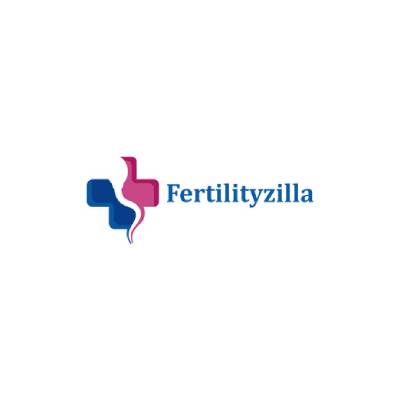What is Hysteroscopy?
Infertility Treatment
Dr. Smriti
Sep 03, 2021
Are you facing the issues of abnormal bleeding? Do you want to know what the primary cause of having abnormal bleeding is? Why does a doctor use the treatment of Hysteroscopy? What is Hysteroscopy? If these are some of the questions irritating your mind, then no worries!! In this blog, I will tell you in brief about Hysteroscopy and how does it help in treating the issues of uterine problems.
It is the procedure that doctors use to identify the cause of uterine problems. With the use of a thin tube, the doctor looks inside your uterus to know the major issues of abnormal bleeding. This thin tube is known as a Hysteroscopy tool. In addition to this, this thin tube is directly inserted into your vagina to inspect the cervix and inside of the uterus.
The treatment is performed through two types of operations such as diagnostic Hysteroscopy and Operative Hysteroscopy. The doctor recommends its treatment and schedules it after the first week of your menstrual period. Its analysis the abnormal bleeding and spotting in postmenopausal women.
What is Diagnostic Hysteroscopy?
Diagnostic hysteroscopy allows the doctor to diagnose/identify the issues of the uterus. It also provides results of other tests such as hysterosalpingography. HSG is a kind of X-ray dye test which doctors use to check the problems in the uterus and fallopian tubes.
The treatment is done with the treatment of laparoscopy and other procedures such as dilation and curettage[D&C]. In the laparoscopy treatment, the doctors insert the thin tube into the abdomen to view the outside of the uterus, ovaries, and fallopian tubes.
How Hysteroscopy procedure step by step conducted?
In this part of my article, I will tell you how hysteroscopy surgery is conducted step by step to understand it better:
Step-1: Before starting the procedure, the doctor will give anaesthesia to the patient so that they can relax.
Step-2: The doctor widens the cervix of the patient to insert a hysteroscopy tool inside it.
Step-3: The doctor inserts a thin tube known as hysteroscopy through your vagina to the length of the cervix and directly inside your uterus.
Step-4: The thin tube is filled with carbon dioxide gas or liquid solution to clear away all the blood or mucus inside the uterus of the patient.
Step-5: Light detected on it enables the doctor to see fallopian tubes and uterine cavity.
Step-6: After detecting the issue of the uterus, in the end, surgery is performed in which small instruments are inserted in your uterus through your hysteroscopy.
However, the entire procedure to complete it takes between five minutes to one hour. It entirely depends upon which hysteroscopy treatment the doctor uses to treat abnormal bleeding problems and whether it is merged with other procedures such as laparoscopy to cure your problem. On the whole, diagnostic hysteroscopy takes less than operative hysteroscopy.
What is the Hysteroscopy cost in India?
The treatment of hysteroscopy cost in India may be around the range of Rs 25000-Rs 30000. The cost of the treatment depends upon the procedure and surgeries involved in it. It may go higher if the patient goes for an extensive procedure such as surgery in the hospital and general anaesthesia.
The cost may include the clinic charges and services offered by the doctors. Although, different clinic charges different prices for the treatment. You can prefer a clinic which suits your budget.
Is There Any Possibility of Getting Pregnant after hysteroscopy?
Yes, there is a possibility of getting pregnant after hysteroscopy treatment as it identifies the root cause of infertility, such as heavy periods, abnormal bleeding, postmenopausal periods, etc.
It also diagnoses the problems of fibroids and polyps and treats them. Earlier the procedure of dilatation and curettage examine the issues of the womb and abnormal growths of polyps, but the procedure of hysteroscopy polyp removal is carried out now. Polyps are non-cancerous growth in the womb, which affects the fertilization process.
It removes the polyps, which affects the fertility of women and increasing their chances of becoming pregnant. In addition, it rectifies the abnormalities of the uterine cavity, which destroy the process of implantation of fertilized eggs into the inner layer of the uterus cavity.
Is it possible to conduct Hysteroscopy before IVF?
If you are facing infertility issues and undergoing treatment for IVF, hysteroscopy is the best and standard option. The main reason for unsuccessful IVF is uterine problems or genetic problems.
Hysteroscopy treatment is essential in the case of failed IVF cycle because it will find out the scarred tissues and remove them. Many doctors perform this process before conducting the treatment of IVF in order to remove scar tissues or polyps, which will further improve the chances of IVF success.
Therefore, yes, it is essential to conduct hysteroscopy ivf because it will allow doctors to check the uterus and whether the uterus is healthy enough to carry out a baby. It is essential for those women who have experienced recurrent miscarriages or implantation issues. The treatment will help you to analyses your uterine.
It is a risk-free process and uncomplicated. If an abnormality is found in your uterine, the patients should go for a hysteroscopy process. The uterine problems can lead to miscarriage or infertility problems, which resulted in failed IVF. For successful IVF, hysteroscopy is essential.
How are your period after hysteroscopy?
Hysteroscopy is an effective method to diagnose uterine problems. It thoroughly inspects the difficulties of the uterine and detects the polyps, fibroids, outgrowth of the mucus membrane, adhesions and other uterine problems.
After this surgery, many women may feel heavy periods, and their first mensuration cycle is much longer than seven days. In addition to this, women may experience clots, change in colour, and smell after hysteroscopy surgery. The unpleasant odour may indicate the infections, and you may experience the discharge of blood every 3-4 hours.
You may experience a heavy and painful mensuration cycle after it. Depending upon the response of your bodies to intervention, you may experience different types of periods.
Sometimes this procedure disrupts the outer lining of the uterus, which put a stoppage on normal periods. As a result, patients may not have a regular period for 4-8 weeks after it. Therefore, after you complete the process of hysteroscopy, it is essential to monitor your mensuration cycle.
Hysteroscopy D&C in Detail
If you want to know in-depth about hysteroscopy, dilation, and curettage, this section of my article will provide a better understanding. Both hysteroscopy and D&C are risk-less and uncomplicated procedures used in combination to remove and treat uterine problems.
Both methods remove unwanted tissues present outside the uterus and treat the issues of abnormal bleeding. These procedures help the doctor check inside your uterus by inserting a thin tube called hysteroscopy.
In addition to this, these treatments identify the reasons for abnormal bleeding, fibroids and polyp growing inside your uterus, removal of tissues after miscarriage, termination of pregnancy, etc.
In both these treatments, anesthesia is given to the patients and depending upon the complications of patients, treatments can be carried out by the doctor separately or together.
For example, in Dilation and Curettage, the doctor can open the cervix of women and insert a thin instrument called a curette to scrape the endometrial lining from the uterus, whereas, in the hysteroscopy process, the doctor checks the major cause of uterine problems by dilating the cervix of women and inserting thin tube and camera in the vagina.
The procedure of dilation and curettage can be done without the light and camera of hysteroscopy. It is conducted after a woman has a miscarriage and removes tissues from the uterus to avoid infections. The entire procedure of D&C takes place in 30 minutes. On the other hand, hysteroscopy is itself essential to diagnose uterus issues.
After hysteroscopy and D&C, most of the women experience mild cramping and slight bleeding due to this procedure.
Is it possible to conduct hysteroscopy biopsy together?
While undergoing the treatment, is it possible to carry a biopsy? Sometimes doctors recommend the endometrial biopsy along with hysteroscopy treatment to confirm the impression of the endometrium.
An endometrial biopsy helps you analyze the mucous membrane of the uterus to identify the infertility reasons, hormonal disorders, cancer, and causes of uterine bleeding. It helps us identify the cause of heavy menstrual bleeding, no mensuration without reason, bleeding after menopause, presence of polyps in the uterus, bleeding after abortion, etc.
An endometrial biopsy can be carried out with diagnostic hysteroscopy to check pregnancy, disorders of blood clotting, inflammatory diseases at the pelvic, serious condition of infections in the patient’s body etc.
Under the proper observation of the doctors, the entire procedure of endometrial biopsy with hysteroscopy is carried out.
Conclusion
If facing fertility problems and unable to conceive, before conducting the process of In Vitro Fertilization, the doctor will conduct the hysteroscopy to investigate uterine problems and improve the chances of fertilization.
FAQs
Why the treatment of hysteroscopy is essential?
The treatment is essential to analyse uterine problems such as abnormal bleeding, heavy periods, bleeding after menopause etc. The doctor inserts a thin tube by dilating the cervix of women to inspect the uterus.
Does any kind of camera is used in the treatment of hysteroscopy?
To inspect the uterine problems of the uterus, the doctor inserts it, which is a narrow tube with a light and a camera in it to see the uterus and fallopian tubes.
Are there any complications faced by women after hysteroscopy procedure?
Yes, after this procedure, women may face slight bleeding, cramping, shoulder pain, nausea and dizziness, etc.
Why hysteroscopy is performed with D&C?
It is performed with Dilation and Curettage to treat the uterine abnormalities and to remove unwanted tissues growing outside the uterus, abnormal bleeding, growth of polyps, terminating the pregnancy, etc. Both these procedures are less complicated and risk-free. It will help women to improve their chances of In Vitro fertilization.
References
https://europepmc.org/article/med/6193274


Can we go for IVF treatment just after hysteroscopy operation?
Thank you for your question. Undergoing a hysteroscopy can provide valuable insights into the uterine environment and may involve treatment for conditions like polyps, fibroids, or adhesions that could affect fertility. Whether or not you can proceed directly to IVF treatment after a hysteroscopy depends on a few important factors:
Recovery Time: After a hysteroscopy, especially if any surgical interventions were performed, it’s generally advisable to allow some time for the uterus to heal. The recovery time can vary depending on the extent of the procedure and the individual’s healing process. Your doctor will typically recommend a rest period ranging from a few days to a few weeks.
Medical Recommendations: It’s crucial to follow the guidance of your healthcare provider regarding the appropriate timing for starting IVF treatment. Your doctor will assess the state of your uterus post-hysteroscopy to ensure that it’s conducive for embryo implantation.
Menstrual Cycle Considerations: IVF treatment protocols often align with your menstrual cycle. Depending on when the hysteroscopy was performed and the specifics of your menstrual cycle, your doctor may recommend waiting until a particular phase of your cycle or the next cycle to start the IVF process.
Individual Health and Well-being: It’s also important to consider your overall health and well-being. Some patients may need more time to recover physically and emotionally before proceeding with IVF.
In most cases, a short waiting period is recommended to ensure the best possible outcome for the IVF treatment. However, the exact timeline should be determined based on a thorough evaluation by your healthcare provider.
We recommend scheduling a follow-up appointment to discuss your recovery progress and plan the next steps for your IVF treatment. Our team is here to provide the best care and support as you move forward in your fertility journey.
Best regards,